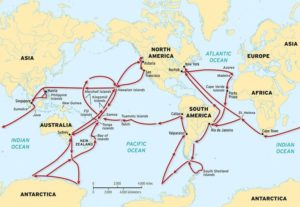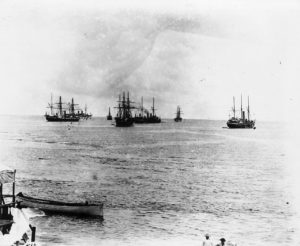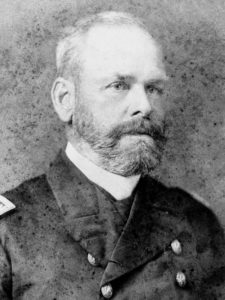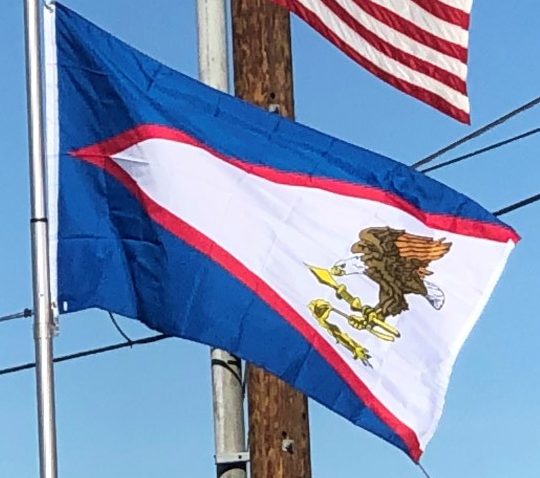The US Exploring Expedition visited in 1839.

In March 1889, an Imperial German naval force entered a village on Samoa, and in doing so destroyed some American property. Three American warships then entered the Apia harbor and prepared to engage the three German warships found there. Before any shots were fired, a typhoon wrecked both the American and German ships. A compulsory armistice was then called because of the lack of any warships.
Early 20th Century:
At the turn of the twentieth century, international rivalries in the latter half of the century were settled by the 1899 Tripartite Convention in which Germany and the United States partitioned the Samoan Islands into two parts: the eastern island group became a territory of the United States (the Tutuila Islands in 1900 and officially Manu’a in 1904) and is today known as American Samoa; the western islands, by far the greater landmass, became known as German Samoa, after Britain gave up all claims to Samoa and in return accepted the termination of German rights in Tonga and certain areas in the Solomon Islands and West Africa. Forerunners to the Tripartite Convention of 1899 were the Washington Conference of 1887, the Treaty of Berlin of 1889 and the Anglo-German Agreement on Samoa of 1899.

U.S. Territory
The following year, the U.S. formally occupied its portion, a smaller group of eastern islands, one of which contains the noted harbor of Pago Pago. After the United States Navy took possession of eastern Samoa for the United States government, the existing coaling station at Pago Pago Bay was expanded into a full naval station, known as United States Naval Station Tutuila and commanded by a commandant. The Navy secured a Deed of Cession of Tutuila in 1900 and a Deed of Cession of Manuʻa in 1904 on behalf of the US government. The last sovereign of Manuʻa, the Tui Manuʻa Elisala, signed a Deed of Cession of Manuʻa following a series of U.S. Naval trials, known as the “Trial of the Ipu”, in Pago Pago, Taʻu, and aboard a Pacific Squadron gunboat. The territory became known as the U.S. Naval Station Tutuila.

In July 17, 1911, the US Naval Station Tutuila, which was composed of Tutuila, Aunu’u and Manu’a, was officially renamed American Samoa.
Interwar Period:
After World War I, during the time of the Mau movement in Western Samoa (then a League of Nations mandate governed by New Zealand), there was a corresponding American Samoa Mau movement led by Samuelu Ripley, a World War I veteran who was from Leone village, Tutuila. After meetings in the United States mainland, he was prevented from disembarking from the ship that brought him home to American Samoa and was not allowed to return because the American Samoa Mau movement was suppressed by the U.S Navy. In 1930, the U.S. Congress sent a committee to investigate the status of American Samoa, led by Americans who had a part in the overthrow of the Kingdom of Hawaii.
Annexation of Swains Island:
Swains Island, which had been included in the list of guano islands appertaining to the United States and bonded under the Guano Islands Act, was annexed in 1925.
Pan American and First Trans-South Pacific Flight:
In 1938, the noted aviator Ed Musick and his crew died on the Pan American World Airways S-42 Samoan Clipper over Pago Pago, while on a survey flight to Auckland, New Zealand. Sometime after takeoff, the aircraft experienced trouble, and Musick turned it back toward Pago Pago. While the crew dumped fuel in preparation for an emergency landing, an explosion occurred that tore the aircraft apart.
